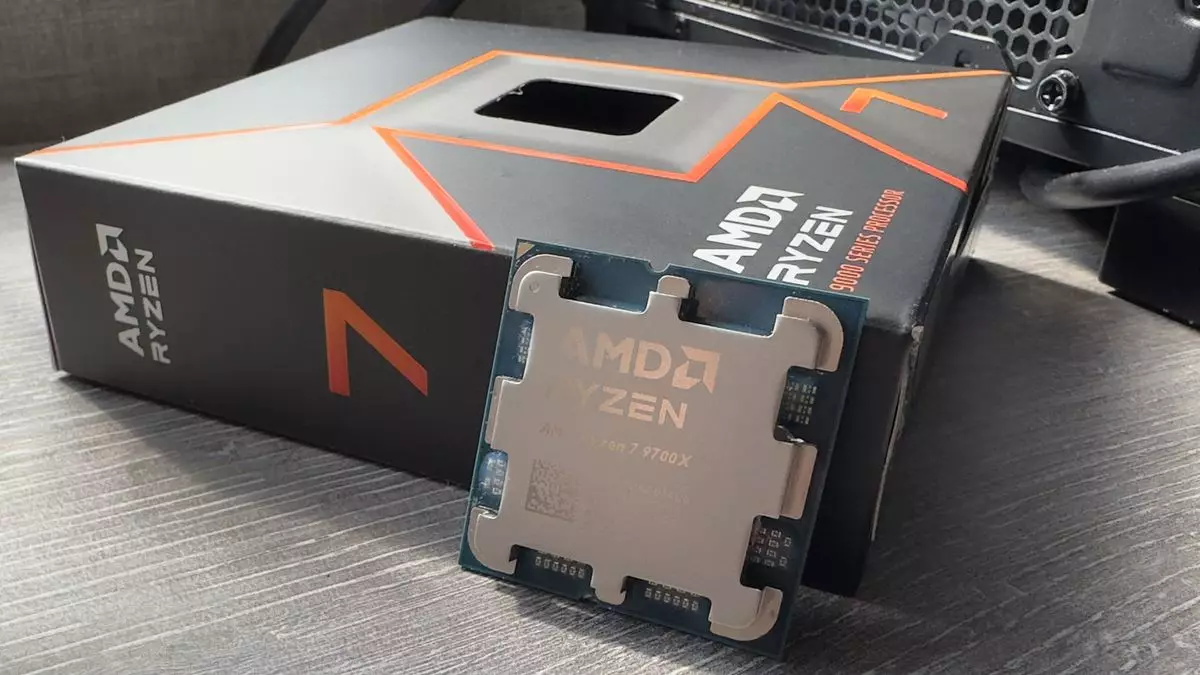In the fast-evolving semiconductor industry, the dynamics of production locations are shifting significantly. A notable development in this landscape is AMD’s decision to utilize TSMC’s newly operational fabrication facilities in Arizona for the manufacturing of some of its Ryzen 9000-series desktop CPUs. This strategic transition indicates a potential pivot towards domestic production, particularly in light of global supply chain vulnerabilities that have emerged in recent years. Amidst ongoing geopolitical tensions and the lingering impacts of the pandemic, the semiconductor sector is increasingly recognizing the importance of maintaining closer production capabilities.
With the Ryzen 9000-series, AMD is reportedly taking advantage of TSMC’s advanced 4nm manufacturing processes. These chips, initially produced in TSMC’s Taiwan fabs, are now being supplemented by production at the Arizona site, marking a crucial partnership between AMD and TSMC. This not only signals confidence in the Arizona facility’s capabilities but also represents a broader trend of tech companies seeking to localize production, thereby reducing dependence on overseas manufacturing.
However, the move to Arizona is not without its economic complexities. TSMC has openly acknowledged that producing chips in Arizona incurs higher costs compared to manufacturing in Taiwan. This premium on production inevitably raises questions about pricing structure for consumers and manufacturers alike. As TSMC plans to shift some of these costs onto clients, AMD—and possibly consumers—could face higher prices for American-made chips.
This predicament illustrates a fundamental tension in the semiconductor supply chain: companies must balance the advantages of domestic production, such as reduced tariffs and improved supply chain resilience, against the reality of higher manufacturing costs. AMD’s historic pricing strategies, coupled with competition from rivals operating at potentially lower costs overseas, will significantly influence how this decision plays out in the market.
Adding another layer of complexity to this scenario is the chiplet design utilized in the Ryzen 9000 series. While AMD is initiating 8-core die production in Arizona, the architecture itself relies on an I/O die, responsible for orchestrating various functionalities, which is still manufactured in Taiwan. This dual-source model complicates the narrative about domestic production; despite a portion of the Ryzen 9000 being processed in the U.S., the final product cannot be entirely classified as “American-made.” This underscores the fragmented nature of semiconductor manufacturing, which often involves a global supply chain.
AMD’s choice to engage in chiplet designs—an increasingly popular architecture—may provide some strategic advantages. This modular approach allows for improved flexibility and scalability in production, enabling manufacturers to optimize performance without incurring the costs commonly associated with producing monolithic dies. Still, it remains crucial to delineate where each component is manufactured, as the “American-made” label becomes increasingly nuanced in an interconnected global business environment.
Looking ahead, TSMC’s ambitious plans for its Arizona operations include the establishment of multiple fabs focusing on progressively advanced nodes—from the current 4nm to future 3nm and even 2nm technologies. These developments suggest a robust vision for U.S. semiconductor manufacturing; however, the timeline for making the most cutting-edge chips available stateside remains uncertain.
As it stands, TSMC has yet to make its most advanced technologies broadly accessible in Arizona, planning to reserve the top-tier N2 chips for Taiwan for the time being. This mirrors AMD’s historical trends, where it tends to adopt slightly older technologies before transitioning to the latest production nodes—evidence of a strategy that prioritizes reliability and cost-effectiveness over having the newest technology on the market.
As AMD navigates this complex landscape, balancing higher domestic production costs with the need to stay competitive amidst evolving industry standards, the long-term outcomes remain to be seen. Industry observers will undoubtedly be scrutinizing AMD’s performance and the implications of domestic manufacturing as we progress into the next decade.
AMD’s engagement with TSMC’s Arizona facilities exemplifies a pivotal moment in the semiconductor manufacturing sector. The balance between cost, efficiency, and geopolitical considerations will dictate future developments. As the industry adapts to changing market conditions and consumer demands, the strategic decisions made today will likely resonate for years to come, impacting not only the manufacturers but also end-users and the broader technology landscape.


Leave a Reply